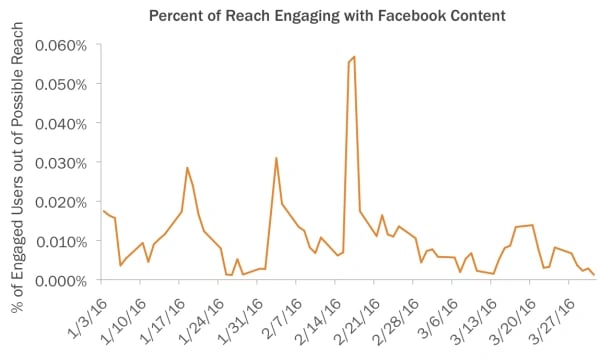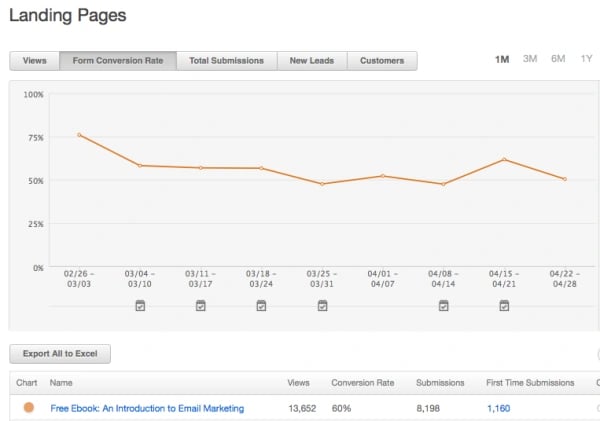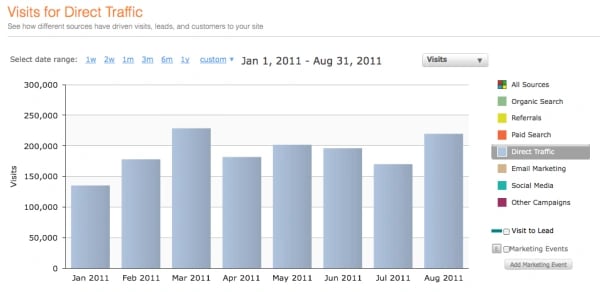Good marketers live by their data. Why? Metrics help us set goals and track progress, and numbers confirm we did a good job. Marketers should have control of their own data, as well as determine what metrics they might need to track before starting any new campaign. By digging into results, we can understand what worked well, what didn't work well, and then learn from it.
Now be strong, you data-driven marketer, you! Jump into this, the most comprehensive metrics and analytics glossary we've ever written. After reading this article, you will have earned your own data geek super hero cape.
Content
1) Blog Traffic - We all want to know how many people are visiting our blog day-to-day or month-to-month. This metric is the total number of people who are viewing your blog content. Is that number changing over time? What is the month-to-month growth rate? That's a great measurement to gauge content success!
2) Blog Subscribers - The number of people who are subscribing to your blog (via RSS or email) is an indicator of the value of your content. If they appreciate what you're writing, they will subscribe to get more. Watch how this number grows over time.

3) Views per Post - How many views does a particular blog post earn? Use this metric to compare posts. Does one post type get more views than others -- list posts, for example? Learn from your successes, and use this metric to create more content that your readers enjoy.
4) Post Views per Contributor - Nothing like stirring up a little competition among your employees, right? If there is a certain author who receives more views on average than other authors, dig in to learn why. Is it because he has a larger social media following to promote his blog post to? Is it because she wrote about a topic that garners more attention? Use this metric to generate some friendly rivalry that helps increase content quality.
5) Blog Post Comments - Comments are a good sign of how engaging your blog post is. You can also encourage conversation by asking an intriguing question at the end of your posts to help stir up debate.
6) Links per Post - Blogging is a critical component of any SEO strategy. Companies who blog get substantially more inbound links than those that do not. Look at which posts generate more inbound links, learn, and repeat.
Social Media
7) Followers & Reach - Some marketers think of their social database like their email database. What is the total count of individuals that your business can reach through social channels? How does that reach change over time? Hopefully that graph is up and to the right.

8) Social Clicks - Measure the number of clicks you receive for the links you're posting in your social media updates. This is a good way to gauge how interesting your network finds your content, how well it's positioned, and how engaged your audience is.
9) Retweets & Shares - When people really love your content, they share it with their own networks. Is your content being shared socially throughout the web? Track it through retweets and shares.
10) Like & +1 Count - Everyone likes to be liked! This metric tells you how many people like your content by clicking a "Like" button on Facebook, or "+1" button on Google+.
11) Percent Engaged - Time to get geeky. Of your entire possible network (your friends, and your friends' friends), what percent is engaging with (meaning clicking, commenting on, or liking) your content? This is a good metric to understand whether people are paying attention to your content.

SEO
12) Keyword Rankings - These rankings tell you for which keywords you rank very well, poorly, or somewhere in between. You can also watch how your rankings change for these keywords over time to ensure you don't slip on important keywords. But be careful not to get caught in the weeds -- measure the traffic and leads generated by those ranking keywords, too!

13) Visits per Keyword - This metrics tells you how much traffic a keyword drives to your website from organic search. This will be a symptom of how often people search for that keyword and how well you rank for the keyword.
14) Leads per Keyword - This number tells you how well the traffic you generate from a given keyword converts into leads for your business. If a specific keyword and page is driving a lot of visits but not leads, perhaps you need to optimize the CTAs on that page to increase lead conversions.

15) Links per Page - A specific web page that has a high quantity of inbound links has a better likelihood of ranking in search. Is there a specific page or blog post that's generated a lot of links? Perhaps you should make more content of that type!
Landing Pages and Lead Conversion
16) CTA Conversion Rate - CTA stands for call-to-action, of course. Track the percentage of people who visited a particular page who also clicked a CTA on that page. It indicates the appeal of the offer, whether the CTA is well-crafted and written, and if it has good placement on the page.

17) Offer Redemption - Offers come in the form of webinars, ebooks, buyers' guides, and the like. When you launch a new offer, how many people download it? Or if it's a webinar, how many people register?
18) Landing Page Conversion Rate - This metric is extremely important and determines your effectiveness at converting visitors into leads. Track the percentage of people who land on your page and then fill out the form. If it's low, you have an opportunity to do some A/B testing to increase conversions.

19) Landing Page Bounce Rate - Think of this number as the flip side to your landing page conversion rate -- it describes the percentage of people that visit your landing page and then immediately leave. If your bounce rate is high, you might need to better align the offer on the page with the language on the landing page, or come up with a more enticing offer.
Email & Lead Nurturing
20) Database Size - This is the number of email addresses in your database that you can email. It is incredibly important that you work at increasing this number over time, as your email database expires at a rate of about 25% per year. So if your database size is staying flat, it's actually shrinking.
21) Email Opt-Out Rate - Your email opt-out rate, also known as your email unsubscribe rate, is the rate at which people select to not receive your emails anymore by clicking the "Unsubscribe" link in your emails. If this number is relatively high, meaning over >5%, take steps to better segment your email list by things like demographic information, company size, pain points -- whatever is appropriate for your business. This allows you to execute smaller, more targeted email sends that offer more value to subscribers.
22) Delivery Rate - This tells you the percentage of your database that actually received your email in their inbox. A low delivery rate could be a sign that you have a low Sender Score.

23) Email Open Rate - This metric tells you what percentage of the people who received your email opened it. If you had a strong subject line and the receiver recognizes your company (or the person who sent the email), you should see a higher open rate. Yipee!
24) Click-Through Rate - Your email CTR tracks the percentage of people who received your email, and clicked a link within that email. Use this metric to understand how valuable the offer you sent was, or how well your link was positioned.
25) Campaign Conversion Rate - This metric indicates the rate at which people who received your email converted into a lead. You can use it to gauge the success of your email campaign compared to past sends. A high campaign conversion rate is the result of a targeted send with a great offer.
Public Relations & Branding
26) Direct Traffic - Direct traffic is the amount of traffic coming to your site as a result of people typing in www.yourcompany.com into their browser. Measuring how much traffic comes to your site in this manner helps you gauge the effectiveness of your PR efforts.

27) Branded Search Traffic - Very similar to direct traffic, branded search traffic is the amount of traffic that came to your site as a result of a visitor Googling your company's name, most likely because they recently "heard" of you and wanted to learn more.

28) Visits From Guest Blog Posts and Media Placements - Was a killer guest article written by your company recently placed on a business or online trade publication? How many visitors did it send to your website? Use that as your metric for success!
Overall Funnel Metrics
29) Site Visits - Measure overall visitors to your website from all channels -- email marketing, social media, organic search, the works. This metric tells you how good your marketing team is at driving traffic to your website.
30) Leads Generated - Are you meeting your leads goal? Are your sales reps' funnels nice and full? Track leads generated month-to-month, as well as number of leads generated per channel, like you see below.

31) Customers Generated - Ahh, the bottom line. If you aren't tracking customers earned, how do you know how valuable your leads are? Use closed-loop analytics to determine which channels generate leads that turn into customers.
32) Sales Cycle Length - Do you know how long it takes for a new lead to turn into a customer? Track this and monitor how it changes over time so your sales team can prioritize their funnel, and marketing can generate more leads that convert in a shorter time span.
This mega list should be helpful when determining how all the different facets of your marketing are performing. When creating a data-driven marketing team, consider using tools to manage your reporting. Ultimately, you'll be making smart, data-driven decisions and your marketing will be better for it.
What other helpful metrics do you look at that aren't mentioned here?
Image credit: Horia Varlan
Marketing Metrics














